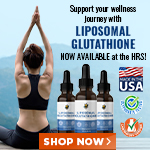FDA now wants their own FDA-approved gateway drugs to require warning labels stating the obvious: Opiod painkillers 'may' cause addiction, death
Friday, March 25, 2016 by: J. D. Heyes
Tags: FDA drugs, opioid warnings, addiction epidemic

(NaturalNews) In case you were wondering, dangerous opioid drugs cause addiction and can kill you. But the Food and Drug Administration (FDA) is just now catching on to that.
"It is just staggering and heartbreaking to see the toll that abuse is taking," said Dr. Tom Frieden, director of the U.S. Centers for Disease Control and Prevention (CDC), during a telephone briefing for reporters. "The epidemic is affecting all of society."
So what's the solution? Apparently to issue "warnings." Well, really, stronger warnings. Oh.
In recent days, federal heath officials strengthened drug label warnings for FDA-approved addictive painkillers, while calling for more government-funded addiction treatment, as the opioid overdose epidemic is "blurring" into a heroin epidemic as well (but by all means, let's legalize more drugs).
To draw more attention to the epidemic, as if it needed more, President Obama will address it at an upcoming drug abuse summit in Atlanta, adding voice to bipartisan calls from the National Governors Association to "call attention to the U.S. opioid crisis," Buzzfeed News reported.
No, they're REALLY bad for you
Some 40 Americans die every day from an opioid painkiller overdose, but then there are some 200 million prescriptions written for the drugs in the U.S. alone every year. Use of opioids has quadrupled since 1999, in fact. And, Buzzfeed News reports, between 1999 and 2014 about 165,000 people died from overdoses, many times as a result of taking an opioid with tranquilizers like Valium and Xanax.The FDA's solution is to issue new, more specific warnings, as if to say, "No, really – opioids are bad for you."
The new labeling will be required for immediate-release versions of oxycodone, morphine, hydrocodone and related drugs, and will warn of the dangers of "abuse, addiction, overdose and death," from their use.
"We know that there is persistent abuse, addiction, overdose mortality and risk," of newborn withdrawal syndrome associated with the painkillers, Douglas Throckmorton, the FDA Deputy Center Director for Regulatory Programs, said in a statement on the new labels.
The director of National Drug Control Policy at the White House, Michael Botticelli, has called on Congress to back an administration request for $1.1 billion to support more treatment programs, disposal of unneeded painkillers, and supplying more communities with naloxone, a drug that reverses overdoses.
The CDC recently unveiled opioid painkiller guidelines for primary care providers, which state that they should only be prescribed, "when benefits for pain and function are expected to outweigh risks."
'We have a long way to go'
Gary Mendell, founder and CEO of Shatterproof, a non-profit organization supporting addiction treatment, applauded the new guidelines, calling them "an important first step to ending this terrible epidemic."Not everyone agrees, as you might imagine. One such critic is Bob Twillman of the American Academy of Pain Management (yes, there really is such a group), who has warned that the new guidelines may discourage some doctors from enriching Big Pharma at the expense of their patients' health (okay, he didn't really say that, but that's the gist). He says that the new guidelines will likely lead to fewer prescriptions.
"Simply put, the one statement that best summarizes the goal of the CDC guideline is, 'Take all steps possible to minimize exposure to opioids when treating chronic pain,'" Twillman wrote. "While CDC undoubtedly is well-intentioned, achieving this goal must be done in a way that does not harm the vast majority of people using opioids to manage their chronic pain–who have a positive risk/benefit ratio and who do not misuse or abuse their vital medications."
For his part, Botticelli says that an increase in heroin overdoses is part of the reason the FDA and other federal officials are moving to curb the use of opioid painkillers, which often occurs among those addicted to prescribed drugs.
"We have a long way to go," he said, adding that overdose death rates have been at record levels since 2013.
Sources:
BuzzFeed.com
Blog.AAPainManage.org
BuzzFeed.com
Science.NaturalNews.com
FDA drugs at FETCH.news
Get independent news alerts on natural cures, food lab tests, cannabis medicine, science, robotics, drones, privacy and more.
Take Action: Support Natural News by linking to this article from your website
Permalink to this article:
Embed article link: (copy HTML code below):
Reprinting this article:
Non-commercial use OK, cite NaturalNews.com with clickable link.
Follow Natural News on Facebook, Twitter, Google Plus, and Pinterest
- Newly released JFK files reveal Pentagon's role in creating Lyme disease and covid in the same lab
- CDC finally halts $11 billion COVID funding scam as health officials admit the ‘pandemic’ was a fraud
- DEADLY DECEPTION: How COVID vaccines increased mortality rates and why authorities hid the truth
- Here are TEN all-natural ways to protect your garden without using harmful chemicals
- GAIN-OF-FUNCTION CAT-BIRD-FLU now on the rise as nearly a dozen cats in Colorado "test positive" for Bird Flu due to contaminated cat food
- Ginseng's hidden anti-aging power: How compound K is rewriting the rules of skincare
- “Endgame: The Hidden Agenda 21” unveils a world of conspiracy and control
- Senate Democrats deny censorship industrial complex existed, defend government's role in silencing dissent
- ATTENTION PRESIDENT TRUMP: Please WITHDRAW your nomination of Dr. Susan Monarez for CDC Director as she is a VAX FANATIC and TOXIC JAB ZEALOT
- Scientists demand FDA withdraw mRNA COVID vaccines amid contamination and gene therapy concerns
- L.A.'s rebuilding nightmare: Only 4 permits issued after fire destroys 6,000 homes
- “The shame of Minnesota”: Somali immigrants behind $250 million child nutrition fraud in largest COVID-era scam
- Former Congresswoman exposes CCP's deep infiltration of California through universities, ports, and fentanyl
- Despite surge in MMR vaccination in Texas, measles outbreaks continue: Is VACCINE SHEDDING fueling the spread?
- PROCESSED TABLE SALT in foods found to fuel depression
- Chewing gum's dirty secret: How your daily habit could be flooding your body with microplastics
- Judicial bias exposed: Judge who blocked Trump's gang deportations attended secretive left-wing conference
- BPA: The hidden hormone disruptor sabotaging your health - and how to fight back
- Newly released JFK files reveal Pentagon's role in creating Lyme disease and covid in the same lab
- Analysis: The coming economic collapse, a mass uprising and Trump's three secret weapons to halt the growing revolt
- Festive flavors: The sweet history, nutritional profile and health benefits of pecan pie
- Elon Musk: Aliens could be here on Earth RIGHT NOW
- Trump reverses course on Gaza plan, says “nobody is expelling Palestinians”
- Big Pharma's $8 Billion bribery scheme exposed: how doctors are pushed to prescribe junk science, not heal
- Boys are back in town: Trump’s patriotic alpha crew takes the wheel while toxic females ride in the backseat
- Reclaim your health: How midlife exercise reverses years of inactivity
- A lack of integrity in Academia: Harvard professor found GUILTY of fraudulent research to promote CRT theory
- Survival 101: Effective EMF blocking techniques
- EPA advisor admits the agency is funneling billions to climate groups ahead of Trump’s return to White House
- Dr. Mike Yeadon releases 15-minute testimony - WATCH - about genocidal intent of COVID “vaccines”
- 5 Simple steps to boost your brainpower: How to strengthen executive function in a distracted world
- Florida takes a stand: DeSantis proposes permanent ban on mRNA vaccine mandates
- Sugarcane extract superior to cholesterol-lowering drugs?
- Mike Adams Sermon 66: God will DESTROY ISRAEL for its wickedness
- Pilots report mysterious lights 'moving at extreme speeds' across Oregon skies
- Space war brewing? Russia threatens to destroy Starlink satellites
- EPA advisor admits the agency is funneling billions to climate groups ahead of Trump’s return to White House
- California's social media censorship law struck down: A victory for free speech or a threat to online safety?
- The Health Ranger releases “Vaccine Zombie” song and music video, using AI-animated zombies for the music video
- Dr. Mike Yeadon releases 15-minute testimony - WATCH - about genocidal intent of COVID “vaccines”
- The pandemic as a tool for INDOCTRINATION: Understanding “The Indoctrinated Brain” by Dr. Michael Nehls
- Newly released JFK files reveal Pentagon's role in creating Lyme disease and covid in the same lab
- Florida takes a stand: DeSantis proposes permanent ban on mRNA vaccine mandates
- Mike Adams releases country western hit single: Goin’ Back in Time is Comin’ Home
- Mike Adams releases music poetry sensation: A Child of God
- “Why we influenced the 2020 elections”: Facebook files reveal the coordinated effort to bury the Hunter Biden laptop story
- Unpacking the Lies That We’ve Been Fed – new song and music video released by Mike Adams, the Health Ranger
- RFK Jr. clears key hurdle: Sen. Susan Collins backs controversial HHS nominee, signaling a new era for health policy
- Mike Adams releases new song and music video: Nothing More Disgusting Than a Globalist
- Michigan sheriff announces criminal investigation into 2020 election crimes, Dominion Voting Systems
- Israeli soldiers accused of even more torture and abuse in the West Bank
- Migrants are taking advantage of recent hurricanes to scam residents and loot their homes
- House Intelligence Committee calls for the ARREST and PROSECUTION of Dr. Anthony Fauci
- Rep. Nancy Mace introduces bill to ban biological males from female facilities on federal property
- Red Cross issues warning to stop blood plasma donations from vaccinated people
- Scientists confirm: GENIUS brain function can be spontaneously unleashed in humans without any apparent cause
- EPA advisor admits the agency is funneling billions to climate groups ahead of Trump’s return to White House
- HYSSOP: What research reveals about the health benefits of this ancient holy herb
- Two containers with completed ballots fall out of truck in Florida
- Fully vaccinated about to see “tsunami” of illness and death, warns virologist
- Global leaders unite to clamp down on “misinformation” with UN-backed Cascais Declaration
- BREAKING: 2025 NDAA authorizes mandatory military draft of WOMEN across America… as Pentagon pursues global NUCLEAR war with both Russia and China at the same time
- Michael Yon warns of a ZIONIST TAKEOVER in Trump’s second administration
- BOMBSHELL: DNA testing kits are a SCAM to develop ethnic-specific bioweapons
- Ozempic and Wegovy weight loss drugs are injectable LIZARD VENOM PEPTIDES that may unleash a devastating wave of organ failure… side effects align with symptoms of SNAKE BITES
- Israeli soldiers accused of even more torture and abuse in the West Bank
- These 13 countries just signed an agreement to engineer a global FAMINE by destroying food supply
- NASA admits that climate change occurs because of changes in Earth’s solar orbit, and NOT because of SUVs and fossil fuels
- RFK Jr. clears key hurdle: Sen. Susan Collins backs controversial HHS nominee, signaling a new era for health policy
- Sermon 30: How Jesus reveals Caesar’s FAKE CURRENCY and FALSE AUTHORITY
- Coriander seeds: Ancient medicine backed by modern science
- Arizona officials claim Maricopa County needs 10-13 days to tabulate results of the election
Science News & Studies
Medicine News and Information
Food News & Studies
Health News & Studies
Herbs News & Information
Pollution News & Studies
Cancer News & Studies
Climate News & Studies
Survival News & Information
Gear News & Information
News covering technology, stocks, hackers, and more



"Big Tech and mainstream media are constantly trying to silence the independent voices that dare to bring you the truth about toxic food ingredients, dangerous medications and the failed, fraudulent science of the profit-driven medical establishment.
Email is one of the best ways to make sure you stay informed, without the censorship of the tech giants (Google, Apple, Facebook, Twitter, YouTube, etc.). Stay informed and you'll even likely learn information that may help save your own life."
–The Health Ranger, Mike Adams












































